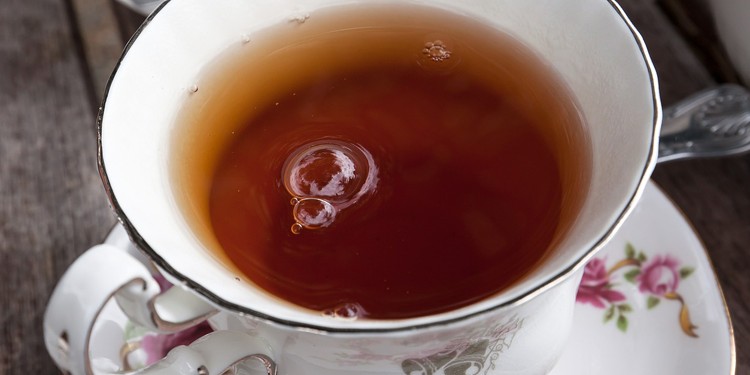Nearly every history teacher that I have worked with has said that they find teaching about the period 1750 -1900 really quite difficult.
In fact when planning a Hampshire network session a few years ago one very successful head of department (now Deputy Head in Dorset) boldly said that we shouldn’t spend too long on sharing ideas on this period because it was boring.
I was really surprised at this. After all wasn’t our job to try and inspire people to teach these seemingly more difficult aspects of the curriculum better? With this lack of vision, no wonder the aforementioned HOD quickly became a Deputy!!
A wee while ago I bought a copy of Neil MacGregor’s A History of the World in 100 Objects. What a magical concept for a radio show and a book! Thumbing through I came across a brilliant idea to help make a scheme of work on Britain between about 1750 – 1900 engaging, meaningful and coherent to our classes.
The idea – simple, base your entire scheme around tea! After all, what could sum up the British national identity more than tea drinking?
I would be surprised if, on asking most people what characterises Britishness; they didn’t mention tea at some point. As MacGregor puts it in his opening gambit to object 92 on p601,
‘What could be more domestic, more unremarkable, more British than a nice cup of tea?’
The great irony about tea is, as MacGregor points out, is tea actually is not very British at all,
‘…what could be less British than a cup of tea, given that tea is made from plants grown in India or China and often sweetened by sugar from the Caribbean.’
One of the many reasons why I think history is such an important subject to teach, is that it helps young people realise how we have got to where we are today. Getting them to realise that something as mundane and as normal as tea actually reveals a huge amount about our national story can be a real ‘penny dropping’ moment.
It means that when they or their families drink tea they actually understand the significance of this seemingly mundane ritual. It also helps them understand one of the main historical concepts, that or change over time. After all, British people didn’t always drink tea.
To my mind, MacGregor’s Early Victorian tea set would make a brilliant focus for a scheme of work on the 19th century. It would add coherence from the start and, by returning to the tea set at different points in different enquiries, would help the youngsters see the purpose of what they were studying.
After all when you start to think about it, behind that cuppa are some revealing stories that help us understand some of the important events of our industrial age.
MacGregor points out that, ‘Behind the modern cup of tea lie the high politics of Victorian Britain, the stories of nineteenth-century Empire, of mass production and of mass consumption, the taming of the industrial working class….’
If we teach this scheme well, our students will never look at a cup of tea in the same way again!
So, how could we start off such a unit of work? What stories could we focus on? How could we pull it all together to make sense of it at the end? I will attempt to answer each of these three questions briefly here, and then over time will provide resources and some fully worked up enquiries that show you exactly what I mean.
The starting point
The starting point for this unit is simple. Have a tea set made up on a tray, cover it with a cloth and have it sat on your desk for all to see you’re your class enters the room.
Alternatively use the presentation in this file. Make sure that your tea set is made up of a tea pot, cups, milk jug and sugar pot. Tell them that what’s under the cloth is something terrifying and absolutely remarkable. In fact its story is very dangerous.
It’s to do with drunkenness, drug addiction, smuggling, slavery, massive profits and murder. Can they work out what it is? Take a few guesses, don’t reveal the answer quite yet.
Tell them that the objects under the cloth are things that they all have at home and in some form or another is used probably every single day.
Can they work out what this ‘terrifying’ object is? Take more guesses then, if they haven’t worked it out, tell them that it is something that constitutes Britishness – something that forms part of our national identity. They might say things like fish and chips, maybe football, curry – they are bound to also say tea. Great – you have got them. Remove the cloth and reveal the tea set.
At this point they will probably groan…. Briefly explain about how tea consumption changed between 1700 and about 1840. It’s a good idea to use Richard Collin’s portrait, ‘A family of 3 at tea’ which can be found on the Victoria and Albert museum website.
At some stage someone will also inevitably ask what on earth tea drinking has got to do with drunkenness, drug addiction, smuggling, slavery, massive profits and murder. Don’t tell them the answers just yet – instead tell them this is exactly what they are going to work out over the coming weeks.
Very soon they won’t look at tea in the same light and they will also understand some very important events in our history.
If you would like to download and use this package of enquiries, click here.
Since I designed this scheme of work, The British Museum have developed their 100 Objects idea and created a new website to help teachers. It is well worth a look.



